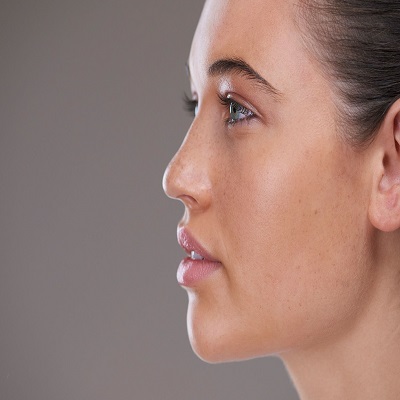Rhinoplasty vs. Nose Fillers – Which Is Right for You?

If you’re considering enhancing the appearance of your nose, you’ve likely come across two popular options: rhinoplasty (surgical nose job) and non-surgical nose fillers (liquid rhinoplasty). While both procedures can improve the shape and contour of the nose, they differ in terms of procedure, cost, recovery, and permanence.
In this article, we’ll compare rhinoplasty and nose fillers to help you determine which option is best suited for your needs.
Understanding Rhinoplasty
What Is Rhinoplasty?
Rhinoplasty in Islamabad is a surgical procedure that reshapes the nose by altering the bone and cartilage structure. It can be performed for cosmetic or functional reasons, such as improving breathing problems caused by a deviated septum.
Types of Rhinoplasty
- Open Rhinoplasty – Involves external incisions for more extensive reshaping.
- Closed Rhinoplasty – Incisions are made inside the nostrils, resulting in no visible scars.
- Revision Rhinoplasty – A corrective surgery performed after an initial rhinoplasty.
- Functional Rhinoplasty – Performed to correct breathing issues or nasal deformities.
Pros of Rhinoplasty
Permanent results – Once healed, the changes are long-lasting.
Can correct functional issues – Addresses breathing problems and structural abnormalities.
Improves overall facial harmony – A balanced nose can enhance facial aesthetics.
Customizable – Can reduce or increase nose size, refine the tip, or straighten the bridge.
Cons of Rhinoplasty
Longer recovery time – Swelling and bruising can last for weeks; full recovery takes up to a year. Higher cost – More expensive due to surgical costs and anesthesia.
Irreversible – Once performed, the changes are permanent unless revision surgery is done.
Potential risks – Includes infection, scarring, breathing issues, or unsatisfactory results.
Types Of Rhinoplasty Surgeries
There are mainly four types of rhinoplasty surgeries, including;
Open Rhinoplasty |
Open Rhinoplasty involves making an incision across the columella (the tissue between the nostrils) to have complete access to the nasal tissues. This procedure is commonly employed for more substantial reshaping. |
Closed Rhinoplasty |
Closed Rhinoplasty is performed when all incisions are made within the nostrils, leaving no visible scars. This strategy is appropriate for less substantial changes. |
Revision Rhinoplasty |
Revision Rhinoplasty is a procedure used to rectify or enhance the outcomes of prior nose surgeries. |
Functional Rhinoplasty |
Functional Rhinoplasty focuses on repairing interior nasal features to promote breathing while preserving the nose’s exterior look. |
Understanding Nose Fillers (Non-Surgical Rhinoplasty)
What Are Nose Fillers?
Nose fillers, also known as liquid rhinoplasty, involve the use of dermal fillers (typically hyaluronic acid-based) to enhance the shape of the nose. This is a non-invasive procedure performed using injectable fillers.
What Can Nose Fillers Do?
- Smooth out small bumps or irregularities.
- Lift a drooping nasal tip.
- Add volume to certain areas for better symmetry.
- Improve minor asymmetry.
Pros of Nose Fillers
Quick procedure – Takes 15-30 minutes, with immediate results.
No surgery or anesthesia required – Minimally invasive with little to no discomfort.
Reversible – Hyaluronic acid fillers can be dissolved if results are unsatisfactory.
Minimal downtime – Most people resume normal activities immediately.
Lower cost – Significantly cheaper than surgical rhinoplasty.
Cons of Nose Fillers
Temporary results – Effects last between 6 months to 2 years.
Cannot reduce nose size – Fillers only add volume and cannot make the nose smaller.
Limited reshaping ability – Not suitable for major corrections or breathing issues.
Potential risks – Includes swelling, bruising, and (in rare cases) vascular complications.
Comparing Rhinoplasty and Nose Fillers
| Feature | Rhinoplasty (Surgical) | Nose Fillers (Non-Surgical) |
|---|---|---|
| Procedure Type | Surgical (requires anesthesia) | Non-invasive (injectable) |
| Permanence | Permanent | Temporary (6 months to 2 years) |
| Recovery Time | 2-4 weeks (swelling for months) | No downtime, minor swelling for a few days |
| Cost | Expensive (PKR 200,000 – 500,000) | Affordable (PKR 30,000 – 70,000 per session) |
| Risk Level | Higher (infection, scarring, breathing issues) | Lower (bruising, swelling, rare vascular risks) |
| Customization | High – Can reduce/increase size, reshape nose | Moderate – Can only add volume or refine shape |
| Reversibility | Permanent, irreversible without revision surgery | Temporary, reversible with enzyme injections |
| Correction of Breathing Issues | Yes | No |
Which Option Is Right for You?
Choose Rhinoplasty If:
- You want a permanent solution.
- You need major reshaping or reduction of nose size.
- You have functional issues like breathing difficulties.
- You are ready for a longer recovery process and higher cost.
Choose Nose Fillers If:
- You want a non-invasive, temporary solution.
- You are looking for minor enhancements or refinements.
- You prefer a quick procedure with minimal downtime.
- You want to test a new look before committing to surgery.
Final Thoughts: Which Is the Best Option?
Both rhinoplasty and nose fillers have their own advantages and limitations. If you’re looking for dramatic, long-term changes, rhinoplasty is the better choice. However, if you prefer a quick, temporary fix with no downtime, nose fillers may be the ideal solution.











